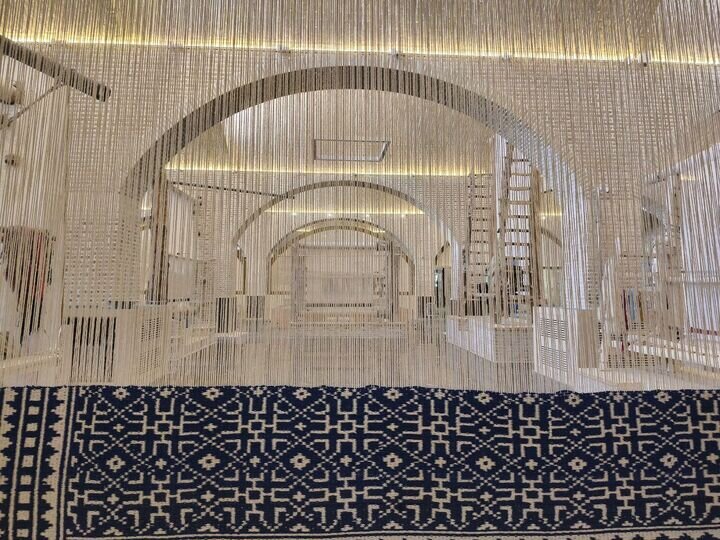Tehran – Dedicated to the art of traditional hand-woven textiles and carpets, the International Academy is set to open quickly in the historic city of Yazd, marking an important step towards reviving and preserving Iran’s rich textile heritage.
According to Hamidreza Soleimani, CEO of the Dafineh Museum Group (Affiliated with the Mostazafan Foundation), the initiative will be launched in collaboration with the International Museum Museum (ICOM) in Yazda and housed at Yazd’s newly launched Tar-O-Pud (Warp and Weft) Museum.
“This cultural and education centre, proposed by the Museum Group, will focus on the introduction and instruction of both loom-based textile art and non-room textile art,” says Soleimani. “The Academy serves as an honorable institution that provides training in textile crafts, recognized by UNESCO as part of human intangible cultural heritage.”
Soleimani stressed that the academy not only aims to maintain these “declining traditions” but also reintroduce them to the younger generation through a series of workshops and educational programs. These efforts are expected to breathe new life into “forgotten” practices and strengthen Yazd’s identity as a historic centre for scientific craftsmanship, he said.
He noted that the academy is to follow the goal of reviving Yazd’s textile industry, once the country’s main hub. “Given Yazd’s rich cultural and economic potential, the academy is designed to promote job creation and encourage young people’s involvement in traditional crafts.”
The educational program includes practical workshops in hand-woven, textile design and weaving techniques. Additionally, the academy will host seasonal exhibitions and special events featuring local artisan work and products.
Emphasizing the broader impact of the initiative, Soleimani said: “The academy represents an important step in reviving authentic textile art and unlocking the potential for Yazd’s cultural and economic development, and is expected to make a significant contribution to the promotion of the region’s cultural heritage and tourism.”
Tar-o-Pud Museum, homage to textile heritage
On March 1st, TAR-O-PUD (meaning “warp and weft”), dedicated to the rich history of Iranian textiles, was officially launched within the abandoned Yanob spinning and weaving factory, a landmark 70 years ago of Yazd.
The museum features a vast collection of carpets, fabrics and textiles, some dating back to the millennium. Among its highlights are rare fabrics from the Baiid dynasty to the late Kajal period, exquisite carpets from the Kajal period, and traditional hand-crafts from the deserts of Iran and the central region. The restored Qajar Royal Tent is also prominently distinctive in the museum’s exhibits, giving visitors a glimpse into the richness of Iran’s past.
Built in the early 1950s by renowned merchant and member of Iranian parliament, Reza Sarravzadeh, the factory was one of the most important textile production centres in the region. At its peak, it employs 700 workers and produces 900 fabrics each year. The unique shape of the factory, inspired by Yazd’s slang architecture, is evidence of the region’s rich cultural heritage.
The museum will offer an immersive experience with recreated traditional weaving workshops and fully functional carpeted looms. Visitors can interact with the artisan and even take part in the weaving process. Some of the looms, reconstructed using 180-year-old designs, revive forgotten weaving techniques, including those used to create rare textiles.
morning

